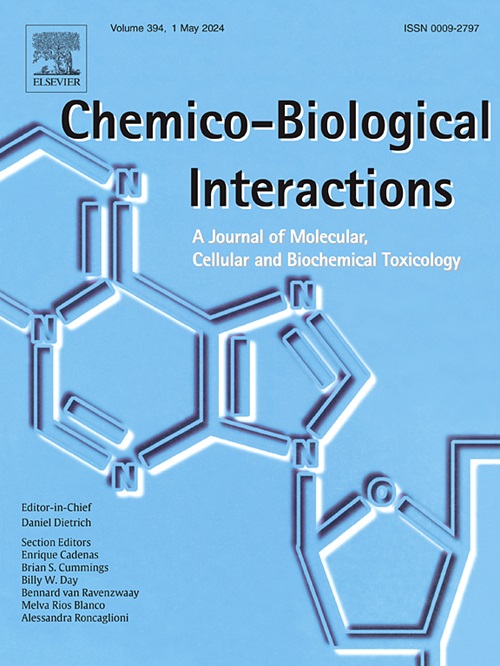Review on the role of autophagy in the toxicity of nanoparticles and the signaling pathways involved
IF 4.7
2区 医学
Q1 BIOCHEMISTRY & MOLECULAR BIOLOGY
引用次数: 0
Abstract
As the development of nanotechnology, the application of nanoproducts and the advancement of nanomedicine, the contact of nanoparticles (NPs) with human body is becoming increasingly prevalent. This escalation elevates the risk of NPs exposure for workers, consumers, researchers, and both aquatic and terrestrial organisms throughout the production, usage, and disposal stages. Consequently, evaluating nanotoxicity remains critically important, though standardized assessment criteria are still lacking. The diverse and complex properties of NPs further complicate the understanding of their toxicological mechanisms. Autophagy, a fundamental cellular process, exhibits dual functions—both pro-survival and pro-death. This review offers an updated perspective on the dual roles of autophagy in nanotoxicity and examines the factors influencing autophagic responses. However, no definitive framework exists for predicting NPs-induced autophagy. Beyond the conventional autophagy pathways, the review highlights specific transcription factors activated by NPs and explores metabolic reprogramming. Particular attention is given to NPs-induced selective autophagy, including mitophagy, ER-phagy, ferritinophagy, lysophagy, and lipophagy. Additionally, the review investigates autophagy's involvement in NPs-mediated biological processes such as ferroptosis, inflammation, macrophage polarization, epithelial-mesenchymal transition, tumor cell proliferation and drug resistance, as well as liver and kidney injury, neurotoxicity, and other diseases. In summary, this review presents a novel update on selective autophagy-mediated nanotoxicity and elucidates the broader interactions of autophagy in NPs-induced biological processes. Collectively, these insights offer valuable strategies for mitigating nanotoxicity through autophagy modulation and advancing the development of NPs in biomedical applications.

自噬在纳米颗粒毒性中的作用及其信号通路的研究进展。
随着纳米技术的发展、纳米产品的应用以及纳米医学的进步,纳米粒子与人体的接触越来越普遍。这种升级增加了工人、消费者、研究人员以及水生和陆生生物在整个生产、使用和处置阶段接触NPs的风险。因此,评估纳米毒性仍然至关重要,尽管仍然缺乏标准化的评估标准。NPs的多样性和复杂性进一步使人们对其毒理学机制的理解复杂化。自噬是一个基本的细胞过程,具有促进生存和促进死亡的双重功能。本文综述了自噬在纳米毒性中的双重作用,并探讨了影响自噬反应的因素。然而,预测nps诱导的自噬没有明确的框架。除了传统的自噬途径外,本文还重点介绍了由NPs激活的特定转录因子,并探讨了代谢重编程。特别关注nps诱导的选择性自噬,包括有丝自噬、er自噬、铁蛋白自噬、溶噬和脂噬。此外,本综述还探讨了自噬参与nps介导的生物过程,如铁凋亡、炎症、巨噬细胞极化、上皮-间质转化、肿瘤细胞增殖和耐药,以及肝肾损伤、神经毒性和其他疾病。综上所述,本文综述了选择性自噬介导的纳米毒性的最新进展,并阐明了自噬在nps诱导的生物过程中更广泛的相互作用。总的来说,这些见解为通过自噬调节减轻纳米毒性和促进NPs在生物医学应用中的发展提供了有价值的策略。
本文章由计算机程序翻译,如有差异,请以英文原文为准。
求助全文
约1分钟内获得全文
求助全文
来源期刊
CiteScore
7.70
自引率
3.90%
发文量
410
审稿时长
36 days
期刊介绍:
Chemico-Biological Interactions publishes research reports and review articles that examine the molecular, cellular, and/or biochemical basis of toxicologically relevant outcomes. Special emphasis is placed on toxicological mechanisms associated with interactions between chemicals and biological systems. Outcomes may include all traditional endpoints caused by synthetic or naturally occurring chemicals, both in vivo and in vitro. Endpoints of interest include, but are not limited to carcinogenesis, mutagenesis, respiratory toxicology, neurotoxicology, reproductive and developmental toxicology, and immunotoxicology.

 求助内容:
求助内容: 应助结果提醒方式:
应助结果提醒方式:


